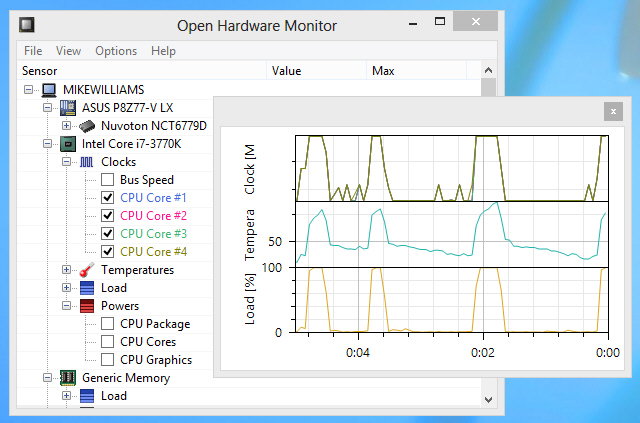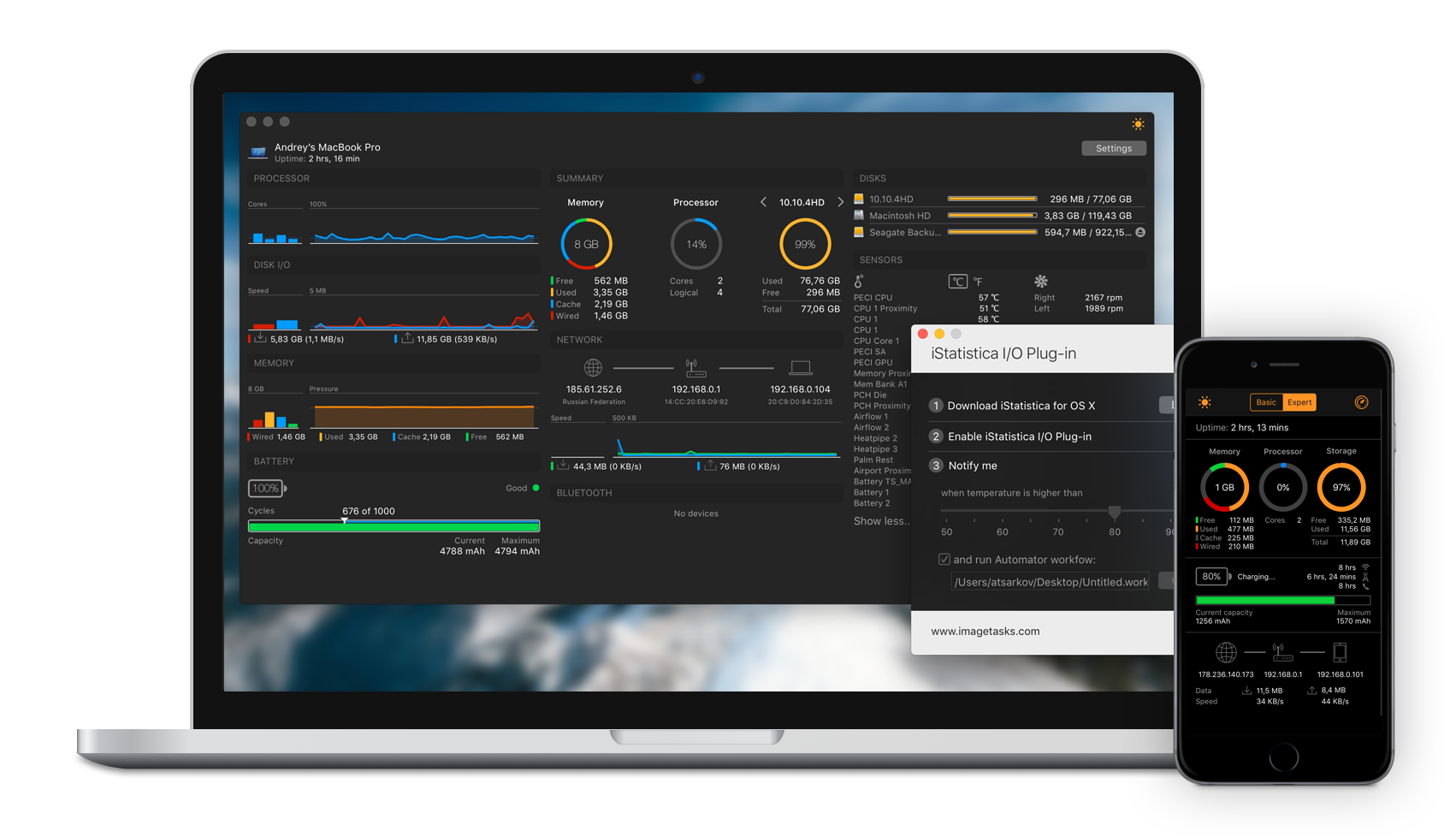

Keeps all system sensor information right in front of you without getting in your way In order to do that, select the Preferences menu from the HWMonitor’s drop-down window, click the Menubar tab, and move the sensors from the left category into the Menubar Items category on the right, so that they will permanently appear as separate entities on the OS X menu bar.Īlso worth mentioning is the fact that HWMonitor enables you to view live changes in your Mac’s internal temperatures with the help of a useful and easy to read History Graph.Īnother plus is the fact that you can choose from three distinct color schemes, two with black on white, and another with white text on a black background.

Real-time overview of all system sensor temperatures One big plus is the fact that HWMonitor enables you to conveniently add separate icons for each of the panels to the OS X status bar, for instant access to temperature readings that interest you most. Like many OS X system utilities of this kind, once the installation is completed, HWMonitor will integrate itself into the OS X status bar and, once you click it, a drop-down window will appear displaying system stats in six little panels, namely Temperatures, Drive Temperatures, Fans and Pumps, Voltages, Currents, and Power Consumption.

This tab is used to view information about skins, manage skin settings, and control buttons to load/unload/refresh skins. Click the pop-up menu on the right (below the name of your Mac), then choose your display. (You may need to scroll down.) Open Displays settings for me. Choose Apple menu > System Settings, then click Displays in the sidebar. Skins : Displays a list of installed and loaded skins. You can wirelessly connect your Mac to devices, such as another Mac and certain smart TVs, and use them as displays. Displays complete information about your hardware's temperatures, fan speeds and power consumption Open Hardware Monitor does register when I do something in 3D so I know that both Open Hardware Monitor and the GPU are working.
OPEN HARDWARE MONITOR FOR MAC DRIVERS
The package bundles the HWMonitor application and the HWSensors drivers pack that allows access to reading the information from the hardware sensors built-in with your Mac's GPU and CPU.
OPEN HARDWARE MONITOR FOR MAC HOW TO
Read how to install HWsensor kext to read more Mac sensors. HWMonitor is a straightforward and useful system utility that brings to OS X’s status bar all the information regarding your Mac’s hardware components’ temperatures, fan speeds, power consumption, and CPU voltage.


 0 kommentar(er)
0 kommentar(er)
